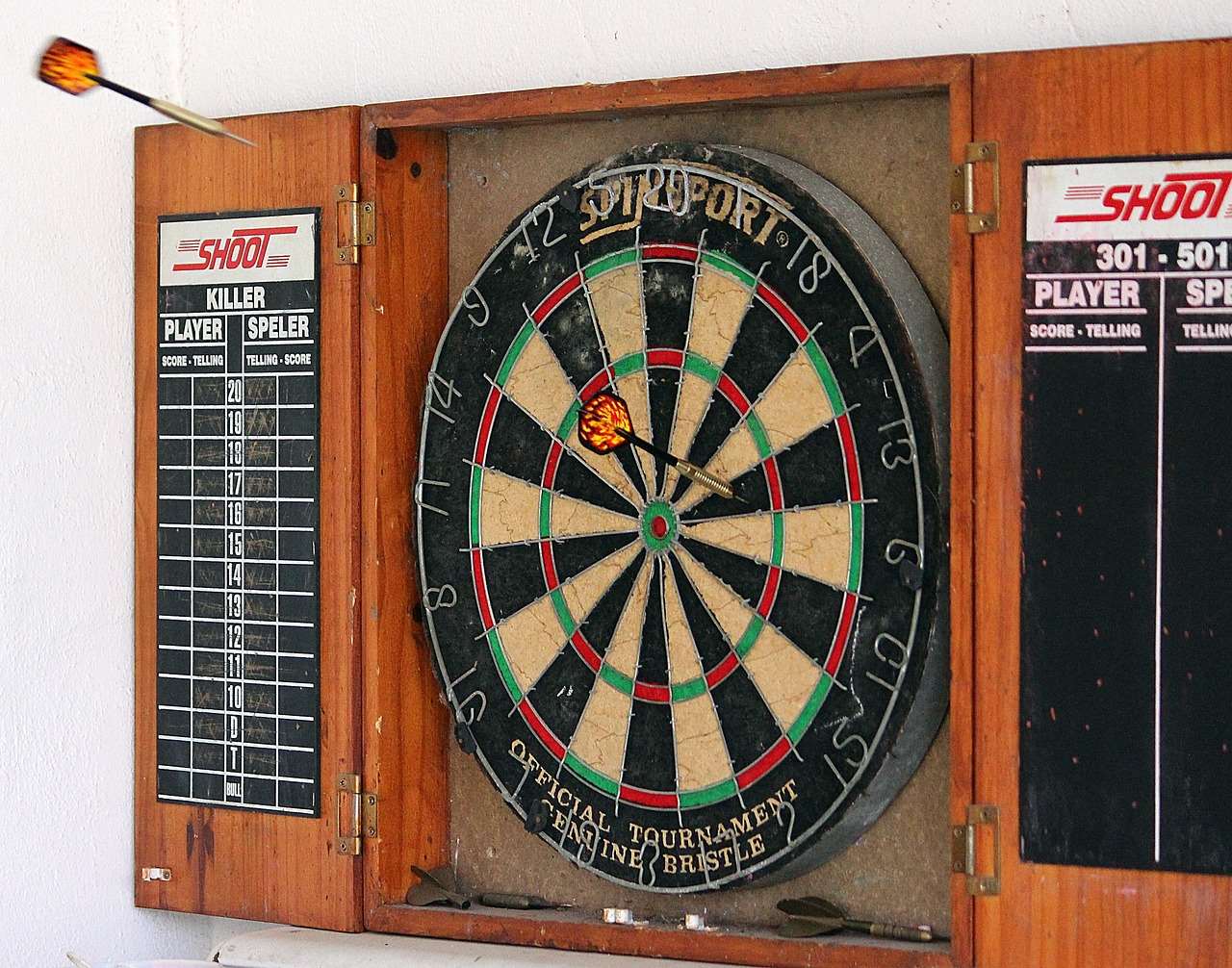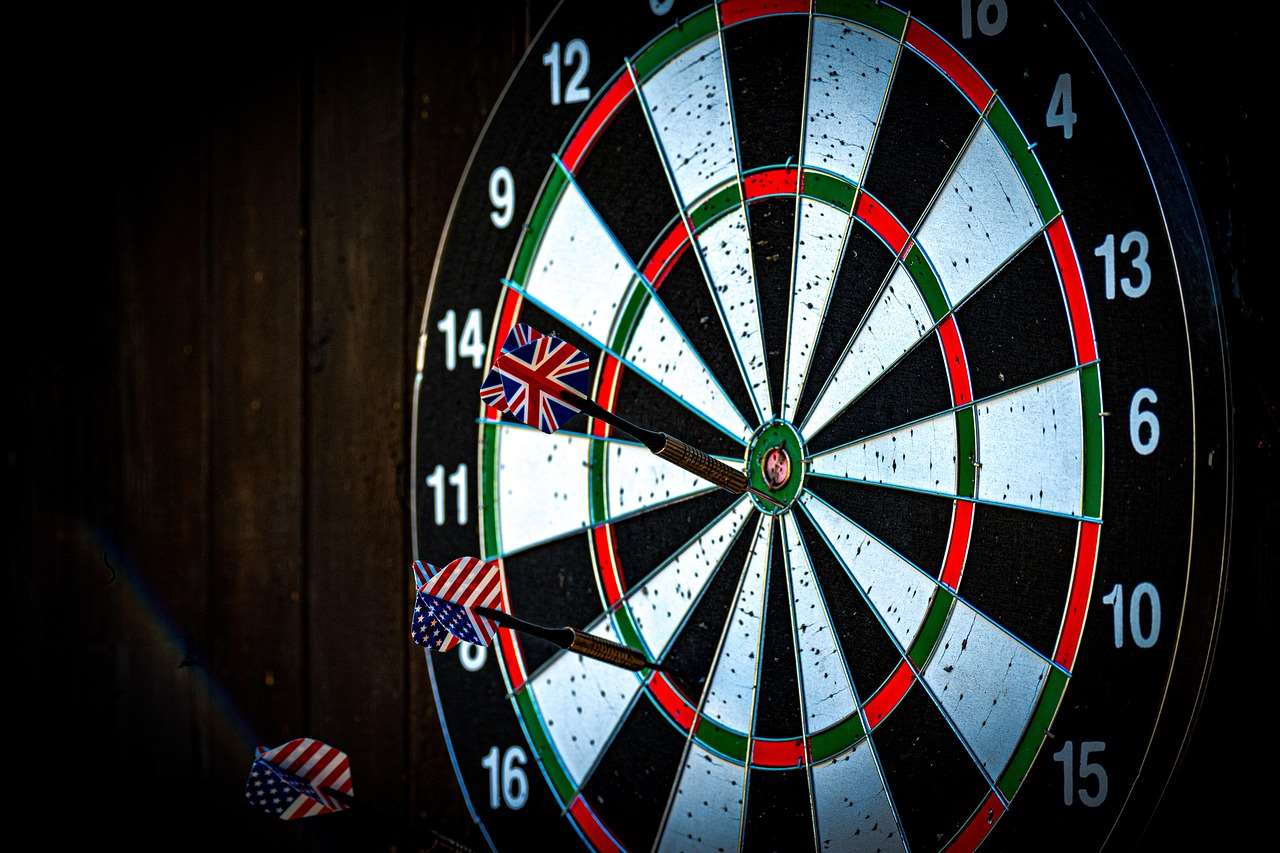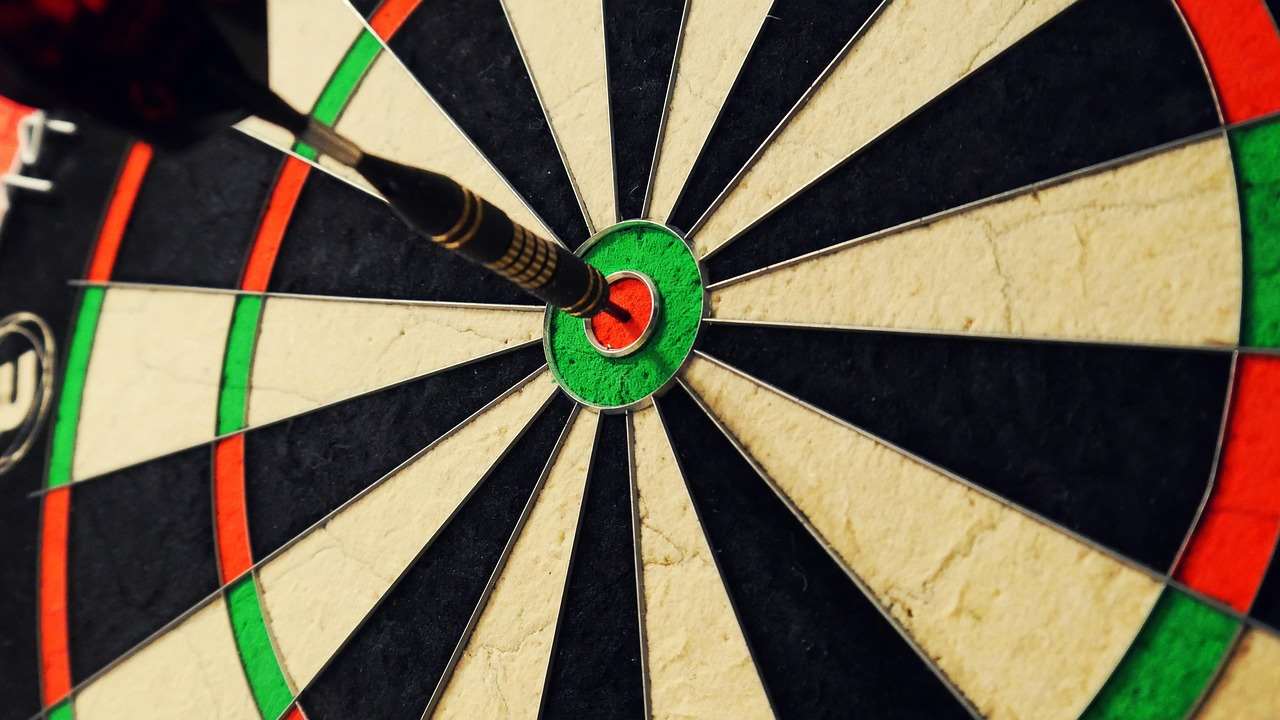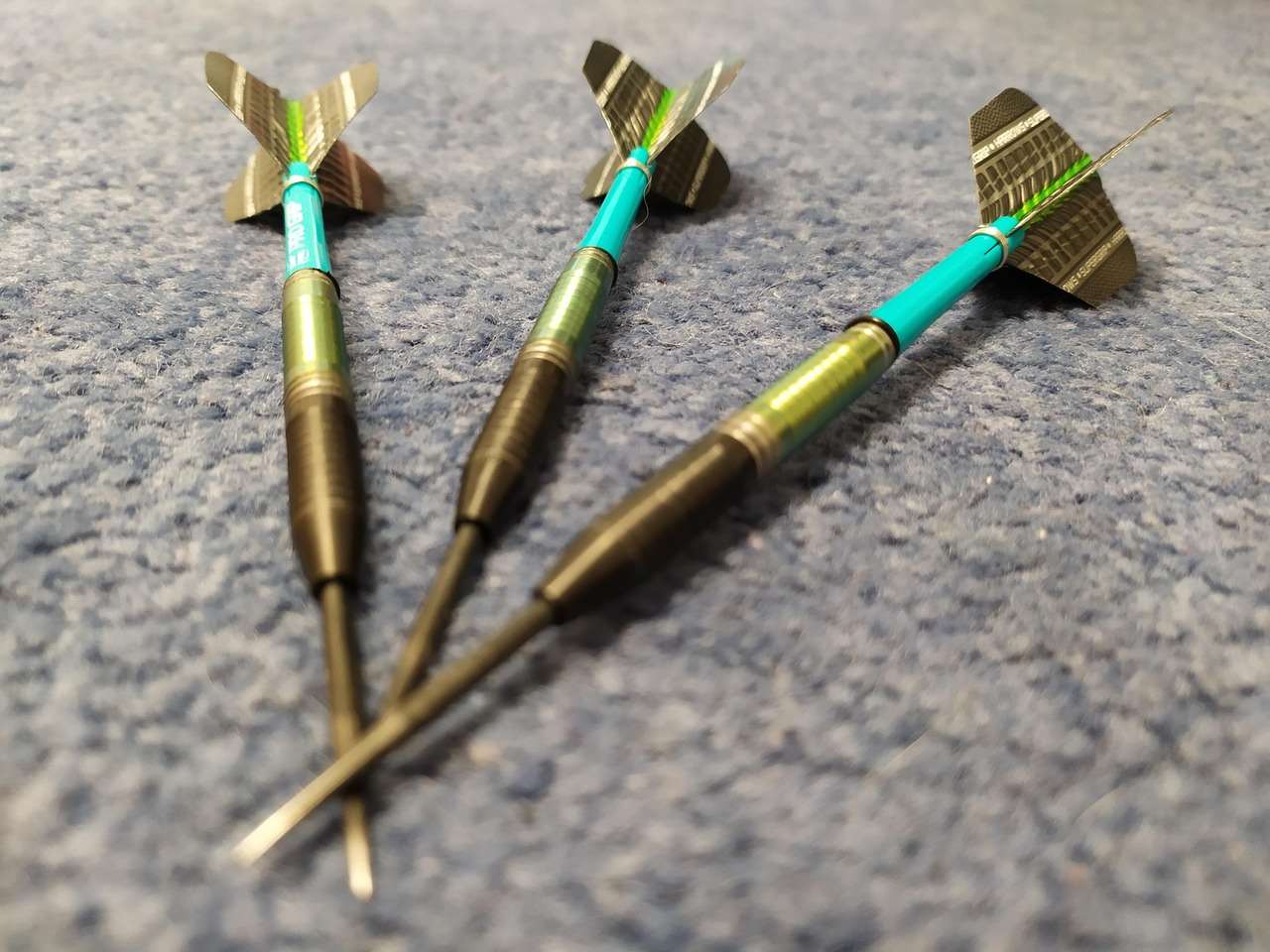Want to significantly improve your game? Focusing on consistently throwing your **darts up** towards the target, especially your follow-through, can dramatically increase accuracy and reduce frustrating low throws. This article explores the techniques and strategies to elevate your **darts up** and master your throw, covering everything from stance and grip to release and follow-through.
⚠️ Still Using Pen & Paper (or a Chalkboard)?! ⚠️
Step into the future! The Dart Counter App handles all the scoring, suggests checkouts, and tracks your stats automatically. It's easier than you think!
Try the Smart Dart Counter App FREE!Ready for an upgrade? Click above!
Elevating Your Game: Why **Darts Up** Matters
The phrase “**darts up**” is more than just a catchy saying; it represents a fundamental principle of accurate dart throwing. It emphasizes a deliberate upward trajectory in your throw, which helps to compensate for gravity and ensures your dart lands where you intend. Neglecting this upward motion often leads to darts falling short or hitting the lower numbers on the board. Understanding and implementing the “darts up” concept is crucial for any player looking to improve their consistency and scoring potential.

Many novice players tend to focus solely on power, resulting in a flat or even downward throw. This approach significantly reduces accuracy, especially at longer distances. By consciously aiming higher and incorporating an upward arc, you’ll find that your darts group more tightly and your scores begin to climb.
The Physics Behind the Upward Trajectory
Consider the physics involved. A dart thrown perfectly horizontally will inevitably drop due to gravity. To counteract this, you need to impart an upward velocity at the point of release. The optimal angle will vary depending on your throwing power and distance to the board, but the principle remains constant: aiming higher to land higher. Think of it like throwing a ball; you wouldn’t throw it straight at your target if it were far away – you’d arc it up to compensate for the drop.
Furthermore, thinking “**darts up**” helps promote a smoother, more controlled release. It encourages you to extend your arm fully and follow through, preventing jerky or abrupt motions that can throw off your aim. This smooth motion also leads to proper dart release of the dart.
Mastering the Stance and Grip for an Upward Throw
Before you can consistently throw your **darts up**, you need a solid foundation in stance and grip. These elements are interconnected and directly impact your ability to generate a smooth, controlled, and upward-oriented throw.
Finding Your Ideal Stance
Your stance provides the base of support for your entire throwing motion. Most players adopt a sideways stance, with their dominant foot pointing towards the board. However, experimentation is key. Some players find a more open stance (angled slightly towards the board) or a closed stance (more perpendicular) to be more comfortable and effective. The key is to find a stance that feels balanced and allows you to maintain a stable posture throughout your throw.
- Weight Distribution: Aim for a balanced weight distribution between both feet. Avoid leaning too far forward or backward.
- Foot Placement: Your front foot should be firmly planted, while your back foot can be slightly angled for added stability.
- Consistency: Once you’ve found a comfortable stance, strive to maintain it consistently from throw to throw.
Optimizing Your Grip
The grip is your direct connection to the dart, and it plays a vital role in controlling its trajectory. There’s no one-size-fits-all grip; it’s about finding what feels natural and allows you to release the dart smoothly and consistently. Remember to keep your dart flights keep falling off!
- Pressure: Avoid gripping the dart too tightly. A relaxed grip allows for a smoother release and prevents unwanted tension in your arm.
- Finger Placement: Experiment with different finger placements to find what provides the best control and balance. Common grips involve using three or four fingers on the dart.
- Consistency: As with stance, consistency is crucial. Once you’ve found a grip that works for you, stick with it.

The Throwing Motion: The Key to Getting **Darts Up**
The throwing motion is where everything comes together. It’s the culmination of your stance, grip, and mental focus. A smooth, controlled, and upward-oriented throwing motion is essential for consistently landing your darts where you intend.
The Drawback
The drawback is the initial phase of your throw, where you bring the dart back towards your face. This phase is crucial for setting the stage for a powerful and accurate release.
- Keep it Smooth: Avoid jerky or abrupt movements during the drawback.
- Maintain a Straight Line: Try to keep your elbow as still as possible and move your forearm back in a straight line.
- Eye on the Target: Keep your eyes focused on your target throughout the drawback.
The Forward Swing and Release
The forward swing is where you accelerate the dart towards the board. This is the most critical part of the throwing motion, and it requires precision and control.
- Smooth Acceleration: Accelerate the dart smoothly and progressively, avoiding any sudden bursts of power.
- Elbow Extension: Extend your elbow fully towards the target. This helps to generate power and accuracy.
- Release Point: Release the dart at the precise moment when your arm is fully extended and pointing towards the target. Experiment to find the perfect release point for your grip and throwing style.
The Follow-Through: The Secret Weapon
The follow-through is often overlooked, but it’s an essential component of a successful throw. A proper follow-through helps to ensure that you release the dart smoothly and accurately. Focus specifically on throwing your **darts up** during this final stage.
- Extend Your Arm Fully: Continue extending your arm fully towards the target even after you’ve released the dart.
- Point Your Fingers: Point your fingers towards the target as if you’re still holding the dart.
- Hold the Position: Hold the follow-through position for a brief moment to ensure that you’ve completed the throw smoothly.

Common Mistakes and How to Fix Them
Even with the best technique, it’s easy to fall into common mistakes that can sabotage your accuracy. Identifying and correcting these mistakes is crucial for continued improvement. Understanding the different scenarios and aiming points can help when deciding darts finish game is at stake.
Inconsistent Stance
A shaky foundation leads to a shaky throw. If you’re constantly shifting your weight or adjusting your foot placement, you’ll struggle to maintain consistency.
- Solution: Practice your stance until it feels natural and balanced. Use a mirror to check your posture and make sure you’re not leaning too far in any direction.
Tension in the Arm
Tension restricts your movement and prevents a smooth release. A tight grip or a tense shoulder can throw off your aim.
- Solution: Focus on relaxing your arm and hand. Take deep breaths to release tension before each throw. Experiment with different grips to find one that feels comfortable and allows you to maintain a relaxed posture.
Jerky Throwing Motion
A jerky or abrupt throwing motion can disrupt your accuracy and consistency. A smooth, flowing motion is essential for precise dart placement.
- Solution: Practice your throwing motion slowly and deliberately, focusing on maintaining a smooth and continuous movement. Avoid any sudden bursts of power.
Neglecting the Follow-Through
A truncated or incomplete follow-through can prevent you from releasing the dart accurately. The follow-through is an integral part of the throwing motion, and it should be executed with the same attention to detail as the rest of your throw.
- Solution: Consciously focus on extending your arm fully towards the target and holding the follow-through position for a brief moment after you’ve released the dart.

Practice Drills to Reinforce the “**Darts Up**” Concept
Practice is essential for mastering any skill, and dart throwing is no exception. These drills are designed to reinforce the “**darts up**” concept and help you develop a consistent and accurate throwing motion. You could even use a Darts scorekeeper app to track progress.
The Line Drill
This drill focuses on developing a consistent release point and a smooth follow-through. Draw a vertical line on the dartboard with chalk or tape. Aim to throw your darts along the line, focusing on maintaining a consistent upward trajectory.
- Focus: Concentrate on releasing the dart at the same point in your throwing motion each time.
- Follow-Through: Pay close attention to your follow-through, making sure you extend your arm fully towards the target.
The Bullseye Drill
This drill focuses on improving your accuracy and consistency when aiming at the bullseye. Aim for the bullseye with each throw, focusing on maintaining a consistent upward trajectory. This can help you achieve a perfect score darts!
- Focus: Visualize the upward arc of your throw and aim slightly above the bullseye to compensate for gravity.
- Adjustments: Make small adjustments to your stance, grip, or throwing motion as needed to improve your accuracy.
The Numbers Drill
This drill focuses on improving your accuracy when aiming at specific numbers on the dartboard. Choose a number on the dartboard and aim for it with each throw, focusing on maintaining a consistent upward trajectory.
- Focus: Concentrate on visualizing the upward arc of your throw and aim slightly above the number to compensate for gravity.
- Rotation: Rotate through different numbers on the dartboard to practice aiming at various targets.

Advanced Techniques to Further Elevate Your Game
Once you’ve mastered the fundamentals, you can start exploring advanced techniques to further enhance your performance. These techniques require practice and dedication, but they can significantly improve your accuracy and scoring potential.
Targeting
Precise targeting is essential for consistently hitting your desired numbers. This involves not only aiming accurately but also accounting for factors such as dart deflection and board wear.
- Visualize: Before each throw, visualize the exact trajectory of your dart and how it will land on the board.
- Micro-Adjustments: Make micro-adjustments to your aim based on your previous throws and the behavior of your darts.
Mental Game
The mental aspect of darts is often overlooked, but it’s just as important as the physical skills. Maintaining focus, managing pressure, and staying positive are all crucial for consistent performance.
- Focus Techniques: Develop techniques to help you stay focused and block out distractions.
- Positive Self-Talk: Use positive self-talk to build confidence and maintain a positive attitude.
- Pressure Management: Practice throwing under pressure to prepare yourself for competitive situations.
Conclusion
Mastering the “darts up” concept is a cornerstone of improving your dart game. By focusing on an upward trajectory, refining your stance and grip, and practicing consistently, you can unlock greater accuracy and achieve higher scores. Remember to identify and correct common mistakes, and don’t be afraid to experiment with advanced techniques as you progress. Elevate your game today by focusing on getting those **darts up**! Now, grab your darts and start practicing. Consider buying a darts set game to practice with!
Hi, I’m Dieter, and I created Dartcounter (Dartcounterapp.com). My motivation wasn’t being a darts expert – quite the opposite! When I first started playing, I loved the game but found keeping accurate scores and tracking stats difficult and distracting.
I figured I couldn’t be the only one struggling with this. So, I decided to build a solution: an easy-to-use application that everyone, no matter their experience level, could use to manage scoring effortlessly.
My goal for Dartcounter was simple: let the app handle the numbers – the scoring, the averages, the stats, even checkout suggestions – so players could focus purely on their throw and enjoying the game. It began as a way to solve my own beginner’s problem, and I’m thrilled it has grown into a helpful tool for the wider darts community.